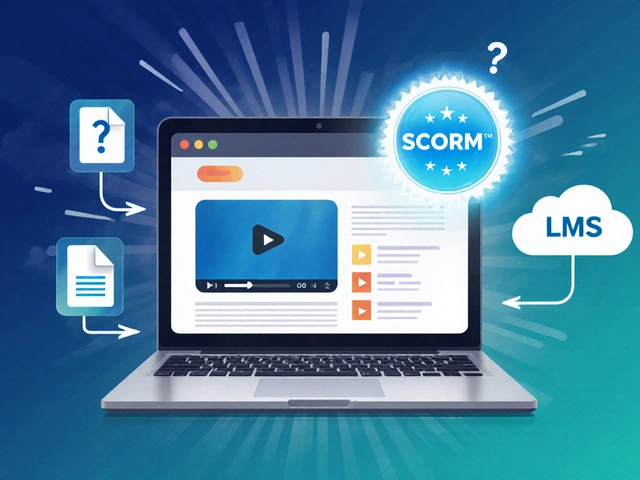
When you hear "IIT", the image that comes to mind is usually a campus buzzing with world‑class research, high‑pay jobs, and a badge of brilliance. But how rare is actually getting a seat there? This guide breaks down the numbers, explains why the odds look the way they do, and shows you what you can do to tilt the chances in your favor.
What "IIT" really means
Indian Institutes of Technology are a group of autonomous public technical universities in India, renowned for engineering, technology, and research. Established in the 1950s, the IIT system now includes 23 campuses spread across the country, each governed by the Council of Indian Institutes of Technology. The brand carries a reputation that can launch careers globally.
The raw odds: acceptance rates across the IIT network
Understanding rarity starts with the acceptance rate - the percentage of applicants who finally get a seat. Here’s a snapshot based on the latest data from the 2024 admissions cycle:
| Institute | Seats offered | Applicants | Acceptance rate |
|---|---|---|---|
| IIT Bombay | 1,250 | 16,500 | 7.6% |
| IIT Delhi | 1,200 | 14,800 | 8.1% |
| IIT Madras | 1,150 | 13,900 | 8.3% |
| IIT Kharagpur | 1,300 | 15,200 | 8.6% |
| All IITs (combined) | 15,000 | 192,000 | 7.8% |
Even the "easiest" IIT - in terms of acceptance percentage - admits fewer than 1 in 12 applicants. That’s why the question of rarity feels so pressing.
Why the numbers look so low
The acceptance rate is a product of three main forces:
- Massive applicant pool: The Joint Entrance Examination (JEE) is taken by over 2 million students each year, driven by the National Testing Agency (NTA). Only the top few hundred thousand clear the cutoff needed for any IIT.
- Limited seats: Across all IITs, the total seat matrix hovers around 15,000. Even if every seat were open to general merit, the competition remains fierce.
- Quota system: About 15% of seats are reserved for categories such as SC, ST, OBC‑NCL, and PwD. While this improves diversity, it also reduces the number of seats available for the open (general) category, tightening odds for those candidates.
Combine a 2‑million‑strong applicant base with only 15,000 seats, and the math works out to roughly a 0.75% chance of a random applicant getting in. The IIT admission odds improve dramatically for high‑scoring candidates, but the baseline rarity remains stark.
Understanding the JEE hierarchy
The path to an IIT seat involves two exams:
- JEE Main: Serves as a screening test. Scores determine eligibility for JEE Advanced and also grant admission to NITs and other engineering colleges.
- JEE Advanced: The final hurdle. Only the top 2.5‑lakhs (approximately) from JEE Main can sit for this exam. Performance here directly maps to IIT seat allocation.
Because JEE Advanced is the decisive test, many aspirants focus all their preparation energy on cracking it. The difficulty level escalates significantly - the average score for qualified candidates sits around 220 out of 360, but the cutoff for top IITs often exceeds 280.

How cutoffs translate to All‑India Ranks (AIR)
Every year, the NTA publishes a cutoff table linking JEE Advanced scores to an All‑India Rank. For example, in 2024:
- Score 300 → AIR < 2,000 (typically enough for IIT Bombay, Delhi, Madras)
- Score 260 → AIR < 10,000 (covers most IITs for general category)
- Score 220 → AIR < 35,000 (still qualifies for some lower‑ranked branches)
If you’re aiming for a specific branch like Computer Science, the required AIR can be even tighter - often within the top 500 for IIT Bombay.
Factors that can boost your odds
While the raw numbers look daunting, strategic actions can move the needle:
- Start early: A 2‑year preparation window lets you cover the entire NCERT syllabus twice, cementing concepts.
- Focus on problem‑solving speed: JEE Advanced tests both depth and quick thinking. Timed mock tests improve both accuracy and speed.
- Target high‑weight topics: Physics (20‑25% of questions), Mathematics (30‑35%), Chemistry (40‑45%). Within Chemistry, Physical Chemistry tends to have the highest scoring potential. \n
- Leverage coaching resources: Institutes provide curated question banks, analytics, and peer competition that simulate the exam environment.
- Analyze previous years' papers: Patterns emerge - certain concepts recur, and the difficulty curve rises gradually.
- Mind your health: Sleep, nutrition, and stress‑management directly affect performance on the day of the exam.
Common myths about IIT rarity
Let’s debunk a few myths that often discourage aspirants:
- "Only 10% of students can get in": The actual figure is closer to 0.8% across all applicants, but for those who clear JEE Main, the chance rises to roughly 8‑10%.
- "You need a perfect 360 to get into any IIT": No. A score above 250 is usually sufficient for most IITs; top‑branch cutoffs are higher but still reachable.
- "Coaching guarantees admission": Coaching improves preparation quality, but success still hinges on personal effort and consistency.

Quick checklist for aspiring IIT candidates
- Complete NCERT Physics, Chemistry, and Mathematics (Class 11‑12) on first read.
- Enroll in a reputable JEE coaching program or follow a structured self‑study plan.
- Take at least one full‑length mock test every week from the 12th grade onward.
- Track your score trends; aim for a minimum 70% accuracy in each mock.
- Review every error, categorize it (conceptual vs calculation), and revisit that topic.
- Maintain a 6‑hour daily study schedule with short breaks to avoid burnout.
- Stay updated on NTA announcements regarding exam dates, eligibility, and seat matrix changes.
What to expect after the results
If you secure a seat, the journey doesn’t end there. You’ll need to:
- Choose a branch that aligns with your interests and career goals.
- Complete the JoSAA (Joint Seat Allocation Authority) counseling process within the stipulated deadline.
- Submit required documents: rank card, academic certificates, category certificate (if applicable), and passport‑size photos.
- Plan for relocation - most IITs are in different states, so consider accommodation and travel budgets early.
For those who fall short, the experience gained during preparation remains valuable. Many top engineering colleges (NITs, IIITs) accept JEE Main scores, and a strong JEE foundation can aid in other competitive exams like GATE or PSUs.
Frequently Asked Questions
What is the average acceptance rate for IITs?
Across all 23 IITs, the overall acceptance rate for the 2024 cycle was about 7.8% - meaning roughly 1 in 13 applicants secured a seat.
How does the quota system affect the odds for general‑category students?
Around 15% of seats are earmarked for reserved categories. This reduces the number of open‑category seats, making the effective acceptance rate for general‑category candidates slightly lower than the overall 7.8% figure.
What JEE Advanced score is needed for Computer Science at IIT Bombay?
For the 2024 admission, a score of about 310 (AIR ~350) was the cutoff for Computer Science and Engineering at IIT Bombay. Scores fluctuate yearly, so aim higher than the reported cutoff.
Can I still get a good engineering degree if I don’t make it to an IIT?
Absolutely. Institutes like NITs, IIITs, and state engineering colleges accept JEE Main scores and offer solid curricula. Many successful engineers and entrepreneurs graduated from these colleges.
How many attempts can I make at JEE Advanced?
A candidate can appear for JEE Advanced a maximum of two times, provided they qualify through JEE Main each year.







